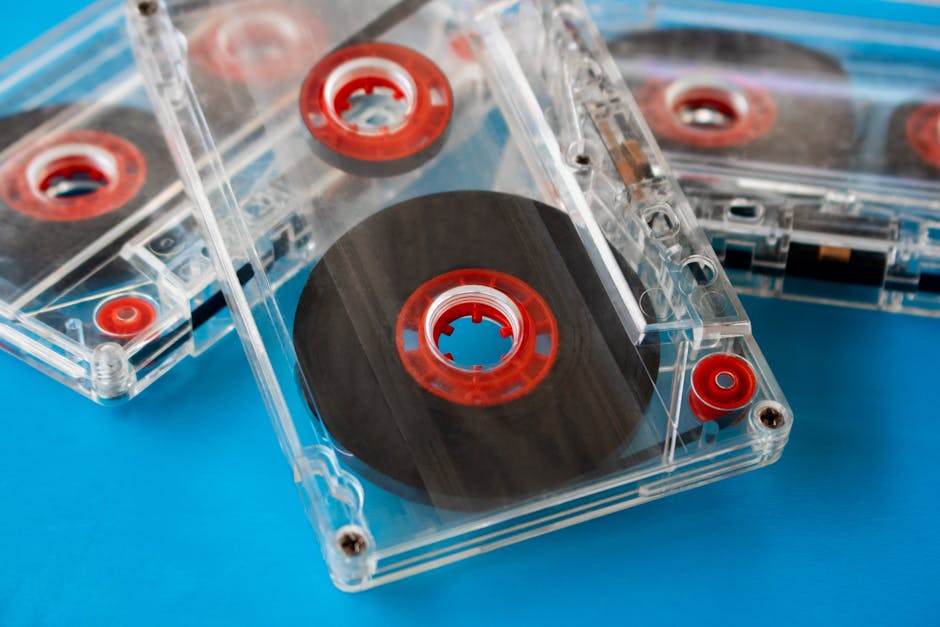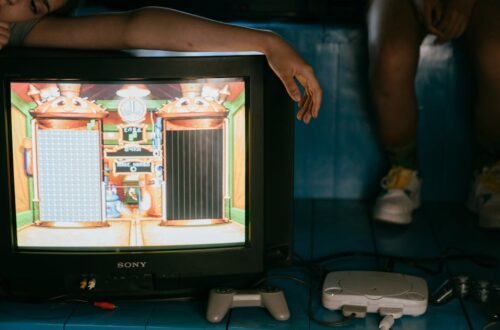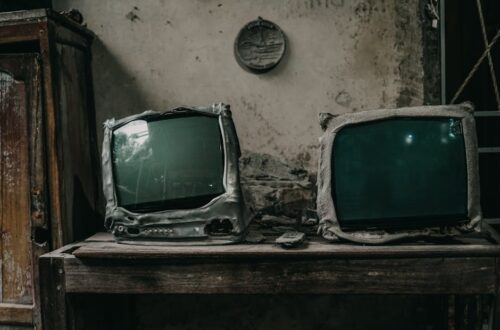Retro TV has a unique power: it bridges generations, stirs nostalgia, and brings people together over shared memories. For many, the golden age of television wasn’t about streaming or binge-watching, but about tuning in at the same time every week, gathering around the family TV, and being transported into worlds both familiar and fantastic. On Scene Flow – Scenlo, we celebrate the enduring magic of retro TV and explore why these classic shows from the 80s and 90s continue to capture our hearts.
The Golden Era of Retro TV: What Made It Special?

Photo by Max Vakhtbovycn on Pexels
In the pre-digital age, television was more than just entertainment—it was a cultural event. Families planned their evenings around favorite shows, and water-cooler conversations at school or work often revolved around last night’s episode. The 1980s and 1990s, in particular, were a period of creative experimentation and innovation. Limited by technology but fueled by imagination, show creators crafted stories that were relatable, humorous, and heartfelt.
Part of the magic of retro TV was its simplicity. Shows like Growing Pains, Full House, and The Fresh Prince of Bel-Air offered viewers a comforting sense of routine and a chance to see themselves reflected in the characters. The practical effects and inventive sets—from the mansion in Silver Spoons to the clever gadgets in Webster—sparked wonder without relying on CGI. The scrappiness and creativity of this era are still evident today, serving as a guidebook for modern productions seeking to recapture that authentic charm.
Retro TV wasn’t just about the stories; it was about the experience. The anticipation of waiting a week for the next episode, the collective laughter during sitcoms, and the communal gasp at dramatic cliffhangers created a shared cultural fabric that’s hard to replicate in the on-demand age. These shows were more than background noise—they were appointment viewing, and they shaped the way we think about storytelling on screen.
Iconic Series That Defined a Generation

Some shows become more than just entertainment—they become cultural landmarks. The 80s and 90s were filled with series that left an indelible mark on pop culture, influencing everything from fashion to catchphrases. Growing Pains stood out as a quintessential family sitcom, with its homey opening sequence and memorable theme song. The show’s blend of humor and heartfelt moments made it a staple in many households, and its cast—including Alan Thicke and Kirk Cameron—became household names.
Other series like Knight Rider brought action and adventure to the small screen, captivating audiences with the futuristic partnership between Michael Knight and his AI-powered car, KITT. The blend of high-tech gadgetry and classic heroism made it a must-watch for kids and adults alike. Doogie Howser, MD introduced viewers to the challenges of a teenage prodigy navigating the adult world of medicine, while A Different World explored college life and social issues with humor and depth.
Even lesser-known or short-lived shows like Tales of the Gold Monkey captured imaginations with their adventurous spirit and exotic settings. These series may have only lasted a season or two, but their impact endures in the memories of those who watched them. The diversity of genres—from sitcoms to sci-fi, family dramas to supernatural thrillers—meant there was something for everyone, and each show contributed to the vibrant tapestry of retro TV.
Nostalgia and the Emotional Power of Retro TV

Photo by Marta Nogueira on Pexels
Why does retro TV evoke such strong feelings of nostalgia? Part of the answer lies in the emotional connections we form with the stories and characters we grew up with. Watching reruns of Diff’rent Strokes or Major Dad can transport us back to a simpler time, when the world seemed a little less complicated and the biggest worry was whether our favorite character would make it through the episode unscathed.
Nostalgia is more than just a longing for the past—it’s a way of reconnecting with our own personal history. The sights, sounds, and even the commercials from retro TV can trigger vivid memories of family gatherings, sleepovers, and after-school routines. For many, these shows were a source of comfort and stability, providing a sense of continuity in a rapidly changing world.
Retro TV also has the unique ability to bring generations together. Parents can share their favorite childhood shows with their own kids, sparking conversations and creating new memories. The timeless themes of friendship, family, and perseverance that run through classic series are as relevant today as they were decades ago. In a world where entertainment options are endless, retro TV offers a rare opportunity to slow down and savor the stories that shaped us.
The Artistry and Innovation Behind Classic Television

Photo by Max Vakhtbovycn on Pexels
While modern television dazzles with digital effects and high-definition visuals, the artistry of retro TV was rooted in creativity and resourcefulness. Showrunners in the 80s and 90s worked with limited budgets and technology, relying on practical effects, clever set design, and strong storytelling to captivate audiences. The result was a distinct visual and narrative style that still resonates today.
Shows like Webster and Silver Spoons used inventive set pieces—secret passages, moving staircases, and high-tech toys—to add a sense of wonder and adventure. Action series such as Knight Rider and Tales of the Gold Monkey combined stunt work, model miniatures, and location shooting to create immersive worlds that felt larger than life. Even sitcoms employed creative camera work and physical comedy to maximize laughs and emotional impact.
The limitations of the era forced writers and directors to focus on character development and plot, resulting in stories that were often richer and more meaningful. The collaborative spirit of the cast and crew was evident in the chemistry on screen, and many classic shows are remembered as much for their behind-the-scenes camaraderie as for their on-screen antics. This blend of innovation and heart is what gives retro TV its enduring appeal.
Retro TV’s Influence on Today’s Pop Culture

Photo by Anna Nekrashevich on Pexels
The legacy of retro TV can be seen everywhere in today’s pop culture. From reboots and revivals to references in music, fashion, and memes, the impact of classic shows is undeniable. Streaming platforms have made it easier than ever to revisit old favorites, introducing new generations to the joys of shows like Full House, The Facts of Life, and The Fresh Prince of Bel-Air.
Many contemporary series draw inspiration from the storytelling techniques and aesthetic of retro TV. The resurgence of the multi-camera sitcom format, the use of nostalgic soundtracks, and even the revival of classic theme songs all pay homage to the shows that paved the way. Fans organize conventions, create fan art, and engage in online discussions that keep the spirit of these series alive.
Retro TV’s influence extends beyond entertainment. The values and life lessons embedded in these shows—kindness, resilience, and the importance of community—continue to shape the way we see the world. In an era of rapid change and digital overload, the simplicity and sincerity of classic television offer a welcome respite and a reminder of what truly matters.
Why Retro TV Still Matters: Lessons for Today’s Viewers

As we look back on the golden age of television, it’s clear that retro TV is more than just a nostalgic indulgence. These classic shows offer valuable lessons for today’s viewers, both young and old. They remind us of the power of storytelling to unite, inspire, and heal. They show us that creativity thrives under constraints, and that authenticity is more important than spectacle.
For content creators, the enduring popularity of retro TV is a testament to the importance of strong characters, relatable themes, and genuine emotion. For audiences, revisiting these shows is a chance to reconnect with their roots and share a piece of their history with others. Whether you’re a lifelong fan or discovering these classics for the first time, retro TV invites you to slow down, reflect, and enjoy the simple pleasures of great storytelling.
On Scene Flow – Scenlo, we celebrate the flow of stories that connect us across time and space. Retro TV isn’t just a relic of the past—it’s a living tradition, one that continues to inspire and delight. So grab your remote, settle in, and rediscover the magic of classic television. The stories may be old, but their impact is as fresh as ever.
Sources
- https://www.myslicesoflife.com/2024/01/favorite-tv-shows-growing-up-in-80s-and.html
- https://www.pastemagazine.com/tv/list/80s-shows-ranked
- https://www.themoviejunkie.com/post/80s-and-90s-tv-shows-usa
- https://www.youtube.com/watch?v=zGOWM1W7mRo





